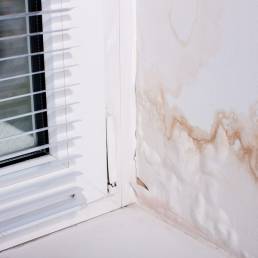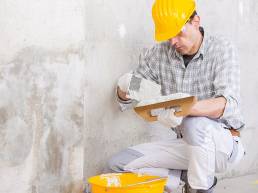How does damp occur?
Rising Damp can be a seasonal effect, increasing during Winter, with rising water tables, and falling during summer. This seasonal effect must be taken in to account during the diagnosis period as, during the summer months, the symptoms could disappear.
Rising Damp is described as dampness resulting from water in the ground, rising up through masonry via capillary flow.
Rising Damp can often be misdiagnosed and must be distinguished from other causes of dampness, such as;
- Rainwater Penetration
- Faulty Rainwater goods and/or plumbing
- Hydrostatic Pressure (lateral penetration of ground water)
- Condensation resulting from water vapour in the air, above and below internal floor level (where floors are suspended timber).


Damp Proof Course
The installation of a damp proof course will prevent Rising Damp and Rising Damp only. Fylde Damp Proofing always ensure the diagnosis is correct prior to making recommendations. In extreme cases we can even arrange sample analysis, in lab conditions, to gain definitive results as to the cause of dampness.
Re-Plastering
A vital part of remedially treating dampness is the re-plastering specification. There are associated risks, that are out of a contractors hands, when using sand and cement renders for the re-plastering.
For this reason, we only use a pre-bagged, cement based, renovating plaster. This renovating plaster has a much better U-Value than sand cement, resulting in higher surface temperatures of walls. As it’s pre-bagged, all the associated risks with self-mixed sand and cement are removed.

